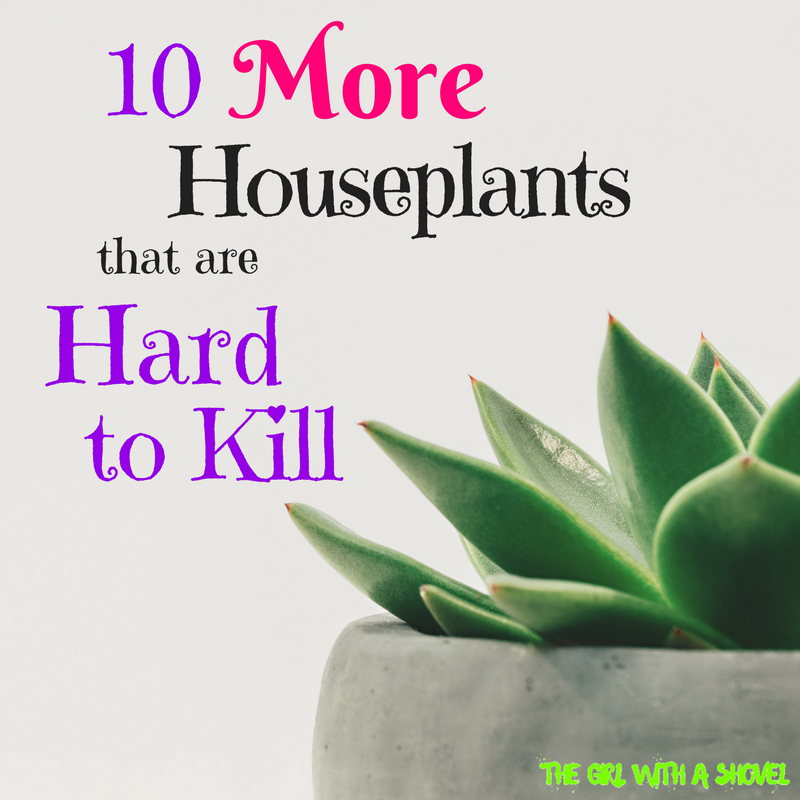For those of you who missed my original post, 10 Hard to Kill Houseplants , there was a lot of interest in these easy, low maintenance plants. So I decided, why not give everyone a few more to choose from?! Here’s a list of some of the less common indoor plants that are still easy, low maintenance, and hard to kill houseplants!
**Note: This post contains affiliate links, which if purchased, I will receive a portion of the profits at no extra cost to you. This helps me to keep providing you with this awesome information!**
#1: Chinese Evergreen – Aglaonema
Starting off with one of the more vibrant plants, this low maintenance thriller also does well in low light conditions. Keep away from direct sunlight and let it dry out a little (not too much) in between waterings. Also, keep away from drafts, as this can cause the leaves to brown. Other than that, this plant is easy to care for, very forgiving, and cut leaves will propagate easily in water, leaving you with plenty of plants for your indoor space!
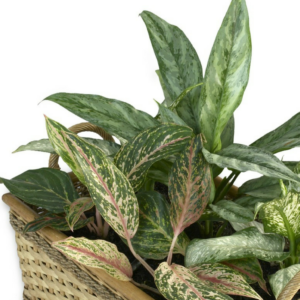
#2: Peperomia – Peperomia
Also called the Radiator plant, Peperomia is definitely on the easy to grow list. These plants prefer medium to brighter sunlight, but can also do well in low light conditions. This will produce a leggier (less bushy) plant and may reduce the vibrant colors in some variegated varieties, but they will tolerate it. They also store water in their fleshy leaves, so make sure to let it dry out a little between watering, as this plant can also handle a bit of neglectful care.
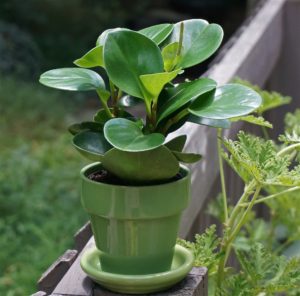
#3: Ponytail Palm – Beaucarnea recurvata
Ponytail palm is one of my favorite indoor plants! I just love the little tuft of leaves sprouting out the top that gives this little guy a very unique and soft look. Another name for this plant is Elephant’s foot, due to the large bulge at the base of the trunk. These plants are actually part of the succulent family, so make sure that the soil remains dry between waterings. Too much water and there can be some serious root damage. Ponytail palms also like bright light, but can do well without it during the winter months as long as it gets plenty of sun in the summer. In warmer climates it can actually be moved outdoors during the warmer months.
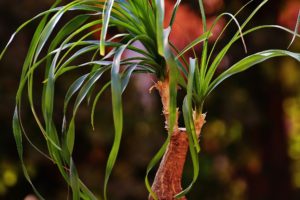
#4: Wandering Jew – Tradescantia pallida
Wandering Jew, often confused with Purple Heart, has deep purple and silver leaves and is a somewhat less common indoor vine (as the more common Pothos vine has been bigger in popularity lately). Don’t rule this one out, however, as it still looks and does great in the indoors! To keep Wandering Jew happy, give it bright light in the mornings, but avoid intense afternoon sunlight. It can also do well in low light conditions, but will become more leggy (less leaves on longer vines). Let it dry out a little between watering and make sure the base of the plant doesn’t stay wet as it will rot if too moist. Also pinch back the vines several times a year in order to get a more bushy vine.
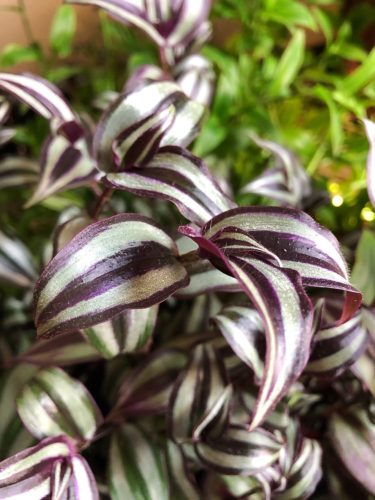
#5: Rubber Plant – Ficus elastica
This ficus is one of the easiest of its relatives to grow! Keep it in bright but indirect sunlight and let it dry out between watering. Rubber plants come in a variety of sizes and can be either a small counter-top plant, or as big as a large tree. Also check out the variegated rubber plant for something pleasantly different for your space!
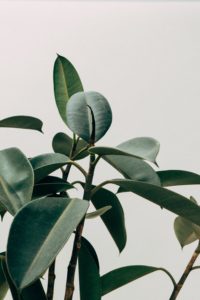
#6: Ti Plant – Cordyline terminalis
Ti plant is another very colorful indoor plant with varieties in a mix of purples, pinks, creams, and greens. Very slow growing, this low maintenance plant does well in bright light and can handle getting a bit dry. Just watch for the leaves getting brown on the edges. This is a sign that it’s been too dry, so step up the watering just a notch. This plant also does well with humidity, so it is the perfect plant for a bright shower area!
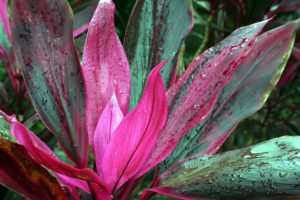
#7: Jade Plant – Crassula ovata
Though a bit more water-loving than its succulent cousins, the jade plant is still an easy-to-care-for plant! Make sure that it gets a medium amount of sunlight and let the soil get slightly dry between watering and don’t let the leaves get wet. Jade plants will like a bit more water during the summer time and a little less during the winter. Keep the same water to sunlight hours ratio for a good estimate of watering needs. Also, if the leaves are starting to brown and fall off, it means that your little guy needs a bit more water. Just make sure that it never stays wet. Like all succulents, this will make your jade plant start to rot.
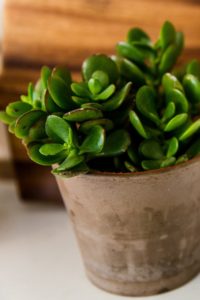
#8: Dumbcane – Dieffenbachia
Dumbcane is a common houseplant to find in local plant centers. Be warned, however, that ingestion of this plant can cause swelling of the throat and tongue, and if ingested in large amounts, can cause suffocation. So keep away from children and animals that would be curious to give this plant a taste. The leaves are a beautiful, spotted green and white, but will turn yellow if it is getting too much sun. Keep it in moderate to bright indirect light. Also, be careful to not overwater this little guy. Let it dry out just a touch between watering. Also, as the plant grows upward, the lower leaves will turn brown and drop. This is normal, just keep doing what you’re doing and trim off any unsightly lower leaves.
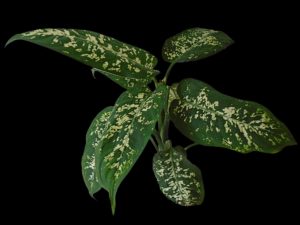
#9: Hoya Plant – Hoya
There are several different types of Hoya, differing in leaf shape and colors from green to cream and pink! All Hoyas enjoy medium to bright light, but don’t do well in direct sunlight. They also do well with a bit of neglect as they like to dry out a bit before watering. Just make sure that they don’t receive too much water! Keep in smaller pots, as these guys like to get a bit root bound and it can also stimulate flowering.
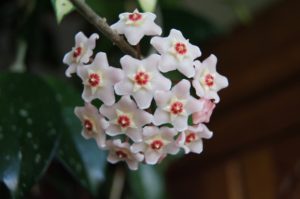
#10: Umbrella Tree – Schefflera
Like several of the other plants in this list, Umbrella Tree, often called Schefflera, does best in bright, but indirect light. It also does not like to be overwatered. If your leaves are turning yellow and falling off, then it is either getting too much direct sunlight, or it is getting too much water. Make sure that all of these plants are in a well-draining pot that will allow your plant to dry out slightly between watering. For Schefflera plant care tips, check out this post by The Spruce, the Schefflera Plant Profile!
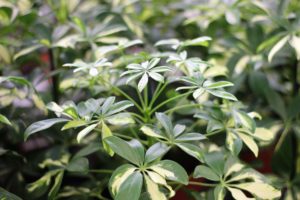
That’s it for my list of 10 More Hard to Kill Houseplants! Some of these can be found at local garden centers, but others may need to be specially ordered. And if you haven’t yet seen my original list of Top 10 Hard to Kill Houseplants, check it out here! Good luck, and feel free to comment below with any additional tips or questions!
Happy digging!

